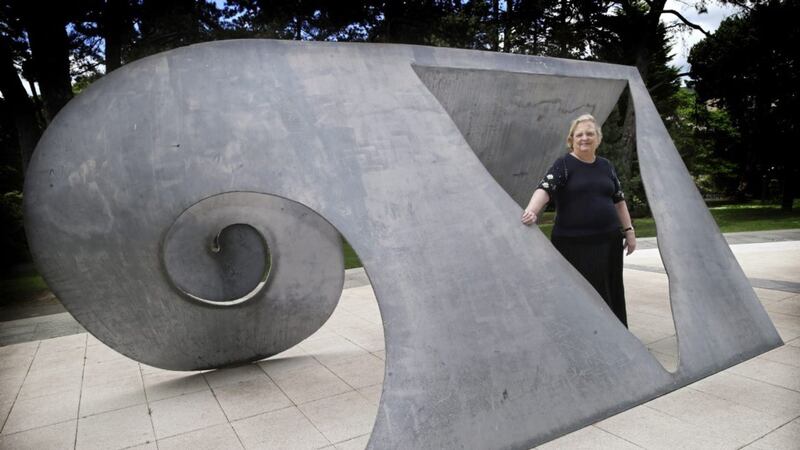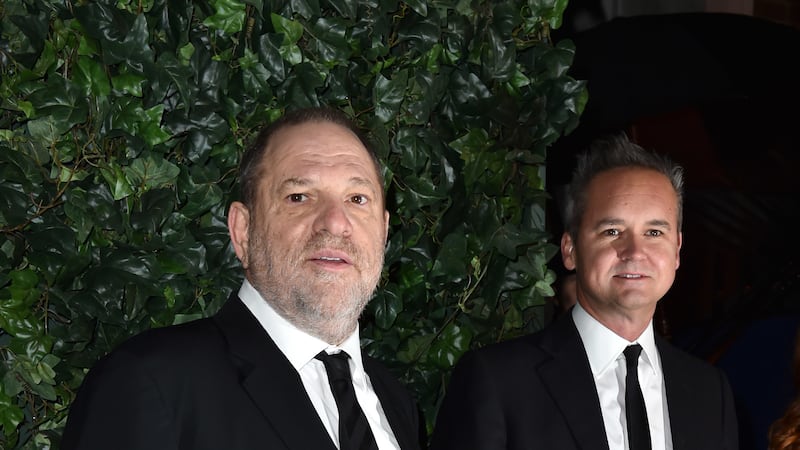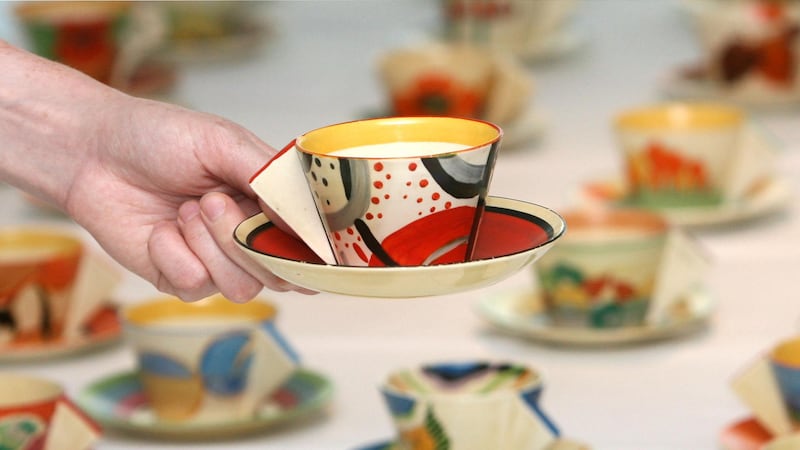WHATEVER you do, don't tell native New Yorker Diana Edkins that fashion photography is frivolous, as she's the expert behind Belfast's new photographic exhibition which examines the tension between gender and sexuality.
A fine art expert, she's devoted her career to the elevation of fashion photography as an art form in its own right. And as curator of the world exclusive exhibition Fashion: Blurred Lines: A Matter of Attitude, she has chosen 50 iconic images from some of the most influential photographers from the last 40 years, including images of singer-songwriter and poet Patti Smith, Madonna, and Debbie Harry.
The thought-provoking new exhibition is a world first for Northern Ireland and Belfast Photo Festival's signature show this year.
It's hosted by the Ulster Museum, in association with partner Victoria Square, and staged in a free exhibition inside at the museum throughout June. Victoria Square shopping centre is also displaying some of the images, with three large scale prints suspended in the centre, along with three five-metre posters.
The exhibition includes work from renowned photographers such as Robert Mapplethorpe, Bruce Weber, Jack Pierson, Craig McDean, Viviane Sassen, Stef Mitchell and Kristen-Lee Moolman, ranging from being taken in the studio to the street, in a chronological order.
Diana's initial start in the art world was not what she would have hoped for, although she has now over 30 fine art photography books to her credit and was curator with Condé Nast Publications – publishers of magazines such as Vogue, GQ and Vanity Fair – for 19 years. She was also director of exhibitions for Aperture, where she produced, organised and curated over 40 exhibitions and 60 limited edition prints.
"I failed art at high school and I couldn't draw for the life of me," Diana laughs as we chat at the Ulster Museum. "But I had travelled all over Europe from the age of eight and always took pictures which I showed my art teacher. He told me that they were so good that I could sell them for advertising."
That sparked her love for photography and she later studied photography and printing, working with some great mentors in New York as their protégé, before going on to make her career in fashion photography.
For Diana, what the featured fashion photographers have achieved in their work speaks volumes of how women, and men, viewed their sexuality and gender.
"Gender really is an attitude and you see that through the photographers' work. The tensions between gender and sexuality have always been unspoken but photographers have had the courage to put it out there visually," she explains.
"Vogue is interesting as it really is an experimental lab (for fine art photography). I've always seen fashion photography like that but Italian Vogue has always been the real laboratory. I used all the Italian Vogues as my basis of research for the show over the last 41 years, from 1975-2016."
"In the beginning everything was simple," she added. "The basic purpose of fashion photography was just to show women wearing clothes but through the years, this was transformed into a subtle and complex operation that involved art, talent, technique, psychology and salesmanship. To achieve its goal, fashion photography needed to seduce – to change our vision momentarily.”
"Fashion photography has never existed in a vacuum," Diana stresses. “Photographers have continually pushed boundaries and the tension between the artistic and commercial demands have generated great creativity and technical innovation.
"These photographers have had the courage and vision to reflect the real social change of the times. That identity can be understood as a kind of social performance – an ‘acting out’– is a key assumption of contemporary thought, which takes for granted identity’s essential changeability."
However, despite Madonna being one of the celebrities featured in the exhibition, Diana was not impressed by her 1992 controversial photography book Sex.
"I thought it was nothing. I didn't even think it was titillating," Diana says. "I thought it was a book that was published because it was Madonna and was published to sell. But it was not thoughtful and an easy way of using a word and a celebrity at a time."
As one of the festival talks, Diana will discuss the evolution of fashion photography and culture at the Ulster Museum on Sunday at 3pm.
To continue Belfast Photo Festival's fashion and gender theme, Mike Trow, the current picture editor at British Vogue, will chair two talks at the Ulster Museum on Saturday (June 18) discussing how some of the magazine's most famous images were created.
:: Fashion – Blurred Lines: A Matter of Attitude, the Ulster Museum, until June 30; admission free. See belfastphotofestival.com








